It doesn’t matter if you’re a prime rib expert or if this is your first time preparing this classic beef cut. My comprehensive guide will show you everything you need to know, from what to look for when buying prime rib to step-by-step instructions on the reverse searing method. I’ll even walk you through ideal cooking times and temperatures to achieve your preferred level of doneness, ensuring your plate fills with only the juiciest, most tender prime rib.
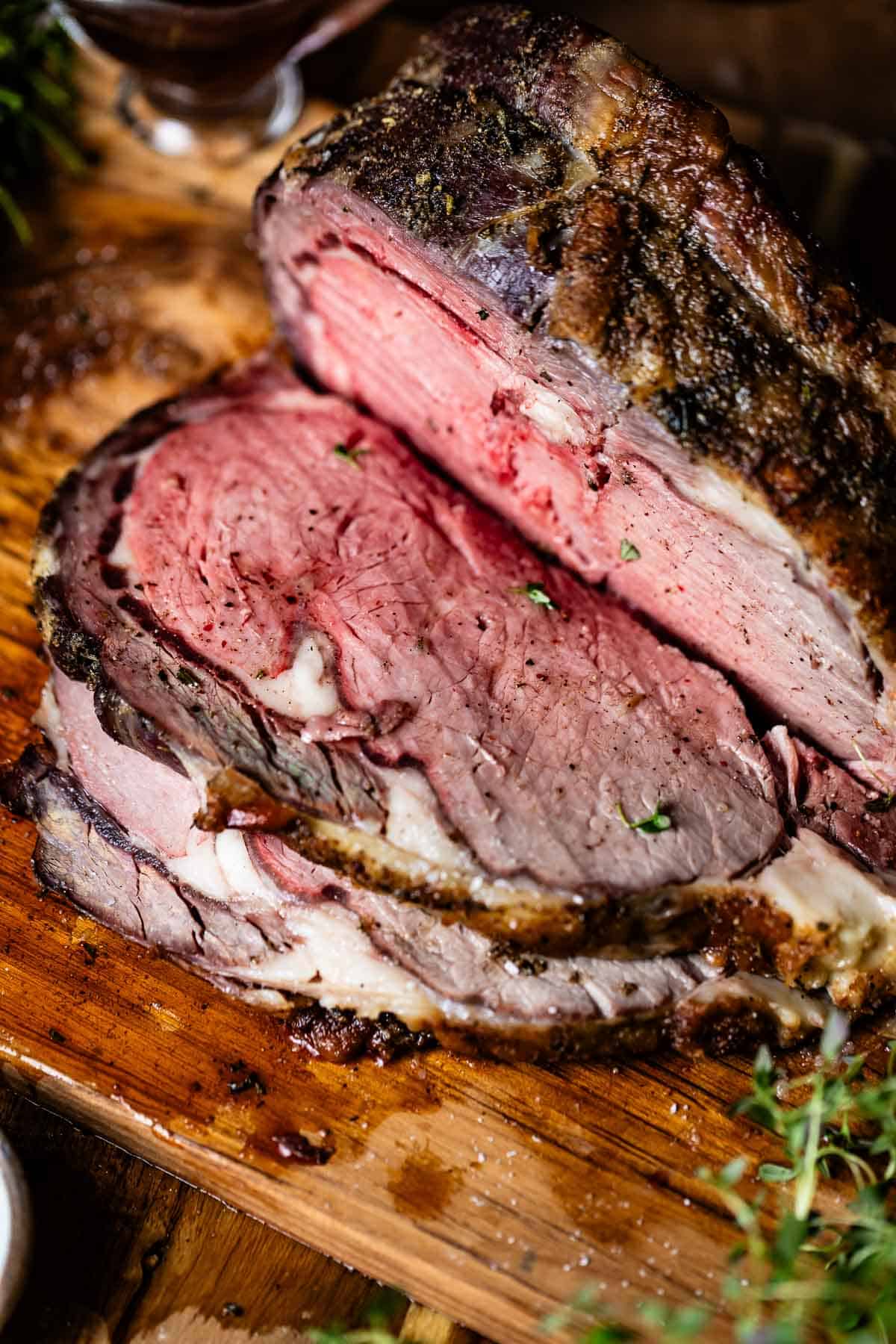
Table of Contents
- Why Reverse Sear Prime Rib?
- Ingredients You’ll Need
- Equipment You’ll Need
- How to Reverse Sear a Prime Rib Roast?
- Reverse Sear Prime Rib Temperature Chart
- How Long to Cook Prime Rib at 250°F Reverse Sear? (Cooking Time Per Pound Chart at 250 degrees F.)
- How to Store, Reheat, and Freeze?
- Ideal Serving Size and Sauces & Side Dishes to Serve it With
- Expert Tips
- FAQs
- Other Beef Recipes You Might Also Like
- Reverse Sear Prime Rib Recipe
Why Reverse Sear Prime Rib?
If you’re used to roasting your beef the old-fashioned way, you’re probably wondering, “What does reverse searing prime rib offer that traditional methods don’t?”
We can personally vouch that reverse-searing—a technique popularized by chef Kenji López—is hands-down the best cooking method to use if you want your beef to come out as succulent, tasty, and effortless as possible. Below, I’ve listed just a few of the many reasons why:
- Even cooking: Unlike traditional cooking techniques, reverse searing prime rib in the oven results in more uniformly cooked meat, eliminating the gray outer ring of meat and inner rawness you might otherwise run into. Instead, the low-and-slow method cooks the beef’s center and edges at the same rate, ensuring the entire interior reaches your desired temperature before searing the outer edge.
- Better texture and flavor: Buttery, rich, and lined with a heavenly crust, this reverse sear prime rib recipe has a much juicer, softer texture than other preparation methods can yield. These ideal results happen because reverse searing allows the beef’s fibers to break down slowly as the fat’s moisture is released into the meat, ensuring every inch has maximal tenderness and flavor.
- Better control over the doneness: When you make a low and slow prime rib, there’s less pressure to time your roast down to the second. Cooking your meat at a lower temperature for longer ensures you have larger windows to achieve your ideal internal temperature, taking the stress out of timing.
- The perfect crust with the most tender meat: Making reverse-seared prime rib roast is a foolproof way to get an ideal balance of tender internal meat and flavorful crusted edges. Cooking prime rib slowly ensures its insides become perfectly tender while the final high-temperature sear melts the roast’s external fat, creating an outer layer of savory, caramelized, and deliciously crusty meat.
- No need to rest: Most often, roasted beef must rest after cooking, taking at least 30 minutes to cool before you can carve. However, reverse seared prime rib doesn’t need all that extra resting time. Instead, the meat has time to rest as it reaches your preferred internal temperature, letting you enjoy its juicy goodness the moment it comes out of the oven.
Ingredients You’ll Need
Though it may seem like a complicated recipe, this reverse seared rib roast features a handful of simple ingredients to make the most flavorful, succulent, and hearty dinner meal.
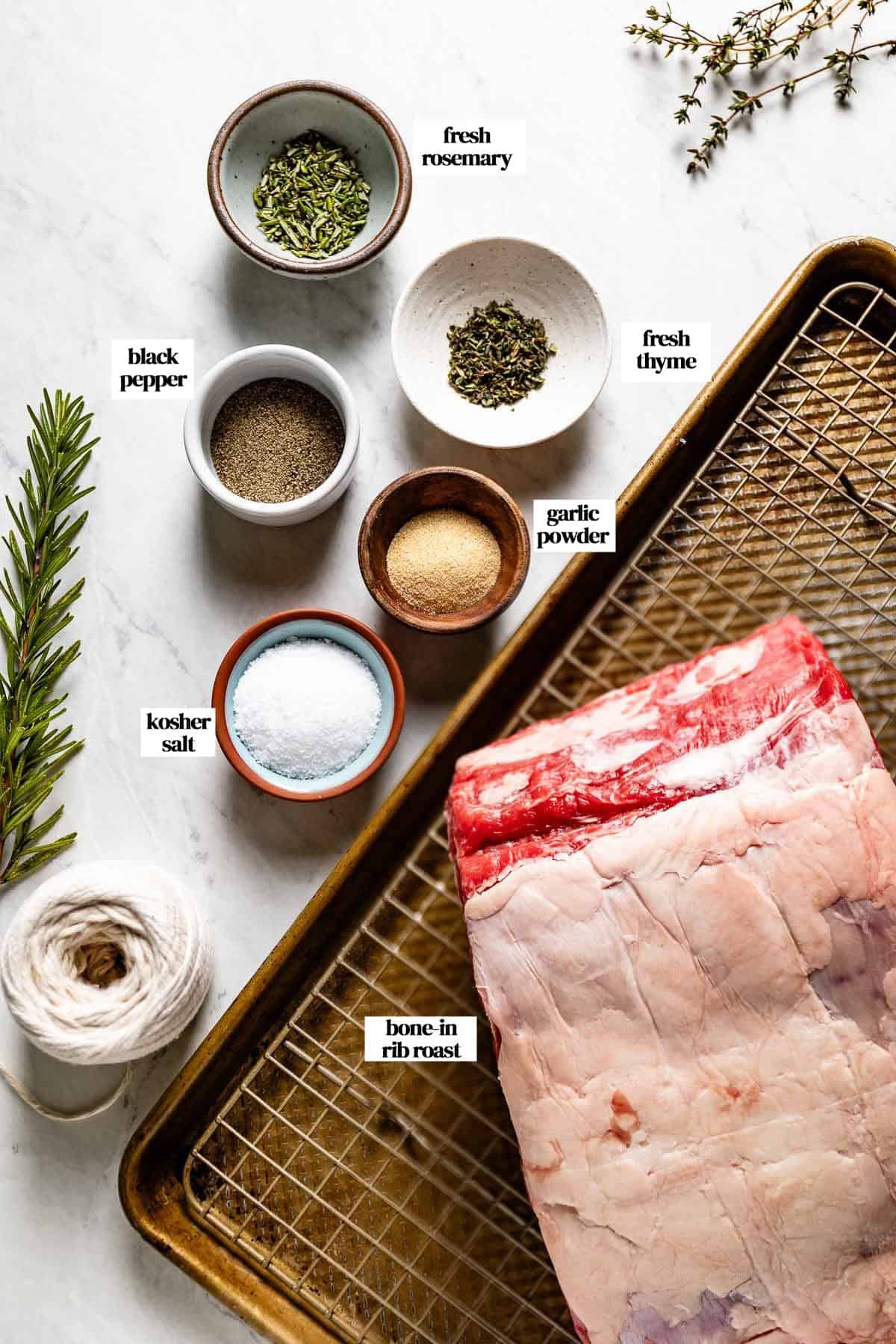
Prime Rib
Prime rib—also referred to as “rib roast,” “standing rib roast,” “ribeye roast,” and “prime rib roast”—is one of the most savory, versatile cuts of beef. That’s why this roast recipe is so luxurious: because it needs so few added flavors to achieve the most succulent, mouthwatering taste.
As we were developing this recipe, we used a 7-pound bone-in prime rib, but this recipe would work with smaller or larger sizes as well. As you can imagine, there is a direct correlation between the cooking time and the size of the meat. Below you will find a helpful reverse sear roast time chart to help you determine the time of cooking based on the weight of your beef.
Additionally, since prime rib is such a high-quality and expensive cut of beef, we wanted to share a few helpful tips as you select and prep your beef to ensure that you get the most bang for your buck:
- Types of prime rib: When looking for prime rib, we suggest purchasing either “prime” or “choice.” Prime cuts are the more expensive of the two, but they have more marbling—a critical factor in the beef’s overall flavoring. We buy my prime rib from Whole Foods or Costco, both of which often carry prime or choice cuts.
- Look for heavy marbling: Much of the flavor of this oven seared prime rib recipe comes from its intermuscular fat—also known as “marbling”—as it keeps the meat flavorful and moist during roasting. The USDA rating, Prime, Choice, or Select, goes hand in hand with the amount of marbling, with more marbling being higher grade and cost. So, when searching for the perfect prime rib, look for cuts that are well-marbled rather than red throughout.
- The fat layer on top: Also known as the prime rib’s “fat cap,” the layer of fat that lies across the top is vital to protecting the beef as it cooks, and it lends the dish more decadent flavors as it melts into the meat’s fibers. Still, if desired, you can ask your butcher to trim the fat as long as a fair amount of the cap remains.
- Bone-in vs. boneless roast: When possible, we prefer cooking a whole prime rib roast—including the bones. Not only does bone-in prime rib look extra fancy, but the bones are also great insulators, helping the beef cook more evenly at both low and high temperatures. Furthermore, the bones help keep the meat upright in the oven, with the fat cap facing up. However, boneless prime rib would also work for this reverse-sear recipe.

- Tying: Tying your prime rib with butcher’s twine is essential when preparing your beef cut, helping maintain its shape for even cooking and keeping the bones intact throughout the cooking process. Though you can ask your grocery butcher to do it for you, you can also tie the meat yourself. Simply line up your string at the center of your prime rib so that it lies between the innermost bones. Then, wrap the string around the body of your meat and double-knot it close to the flesh. From there, you can tie 2-4 more strings (depending on the size and weight of your ribeye roast), moving outward from the beef’s center until you secure the entire cut in a uniform shape.
- Frenched prime ribeye: Another popular way to prep a prime rib is by slicing it in a “Frenched” fashion, which you can ask your butcher to do for you. However, if you prefer to do it yourself, you’ll need to slice off any meat and fat at the lower 1-2 inches of the bone. This preparation method results in a sophisticated presentation and makes it easier to locate good slicing spots when carving your meat.
- The Cost (Look for the sale): Due to its luxurious taste and high demand, prime rib tends to be the most expensive cut of beef, ranging from $11 to $20+ per pound. However, it tends to go on sale during the holidays, making it a no-brainer for large seasonal get-togethers.
Seasonings
You don’t need to spend extra money or time putting together an extravagant seasoning mix when you reverse sear a prime rib roast. This elegant cut boasts one of the richest, butteriest flavor profiles, so our simple Prime Rib Rub is the perfect (yet minimal!) addition to bringing out its naturally delectable taste. You’ll need:
- Kosher salt: We prefer Diamond kosher salt (affiliate link) due to its coarse yet delicate texture and mild flavor. If you use Morton kosher salt—which has a more concentrated flavor—We recommend using half the amount to avoid over-salting your beef.
- Black pepper
- Fresh thyme and fresh rosemary: Herby, light, and earthy, these fresh herbs help brighten the succulent richness of prime rib roast. If you prefer a dried version, we suggest using half the amount due to their more potent flavors.
- Garlic: Garlic powder helps give this reverse roast prime rib an extra layer of bold, savory taste. Though you can use fresh garlic instead, remember that it will be harder to distribute evenly across your beef’s exterior, and it’s more likely to burn while roasting your beef (especially during the final searing.)
Optional Add-Ins
- Other seasonings: If you want to add notes of smoky spice to your reverse sear standing rib roast, try adding a tablespoon of paprika (or smoked paprika) to your seasoning mix. You can also add onion powder for more savory-sweet, pungent notes.
- Oil: When testing this recipe, we tried a few versions that used melted butter as an extra basting layer on the prime rib. In all, we found that it didn’t need the extra butter, as this cut of meat already has a healthy amount of fat on it—both on the prime rib’s fat cap and its inner marbling. However, fat does provide flavor, so if you want to enhance your beef’s taste further, select a neutral oil with a high smoke point, such as ghee (i.e., clarified butter), avocado oil, or canola oil. This addition will help more evenly hold your seasoning in place and add a more decadent, buttery finish to your roast’s crusty edge. If you add extra oils to your meat, we recommend using around 4-5 tablespoons for a 6-7 lb. bone-in prime rib.
Equipment You’ll Need
One of the best ways to get perfectly cooked prime rib is to begin with the right equipment. Luckily, you only need a few basic tools to ensure your roasting is as effortless as possible:
- Sheet pan fitted with a wire rack: If possible, we recommend cooking your reverse sear ribeye roast on a wire rack fitted over a sheet pan. The holes in the rack will help circulate the hot air, allowing the meat to cook more evenly and letting any drippings fall from the meat and into the pan. If you don’t have this equipment, though, don’t worry! You can also roast your prime rib on a baking sheet or a V-rack roasting pan.
- A meat thermometer: Because timing is essential when roasting your prime rib, we highly suggest using a probe thermometer (affiliate link), as it will alert you exactly when the beef reaches your preferred temperature. However, if all you have is an instant-read thermometer, you can still get good results following the timing guide we share in the temperature chart below.
How to Reverse Sear a Prime Rib Roast?
Follow the foolproof instructions below to take all the guesswork out of this gourmet-level reverse seared prime rib recipe. Stress-free and unbelievably delicious, this meaty main will stun everyone at your table without the difficulty of traditional roast beef.

- Dry brine the prime rib: One day before cooking, place a wire rack on a sheet pan and place your ribeye roast on top. Use a paper towel to dry the meat on all sides, then sprinkle two tablespoons of kosher salt over its entire surface, firmly pressing it into the flesh to help it adhere. Transfer the salted prime rib to the refrigerator and let it sit, uncovered for at least overnight or up to 48 hours.

- Remove the prime rib from the fridge: Two hours before roasting, remove the meat from the refrigerator and let it come to room temperature. Dry the excess moisture with paper towels right before coating it with the spice rub.
- Make the seasoning: While the rib roast warms up, add the black pepper, rosemary, thyme, and garlic powder to a small bowl. Mix the ingredients until thoroughly combined.
- Prepare the oven: Preheat the oven to 250 degrees F.
- Season the meat: Rub the prime rib with the seasoning mixture, ensuring it covers all sides. Firmly press the seasoning into the meat to ensure it adheres, then make sure the rib roast lies on the wire rack with its fat side (i.e., fat cap) facing up. If using a thermometer with a probe, insert it lengthwise through the center of your beef, staying away from the bones.

- Cook the prime rib low and slow: Transfer the beef to the oven and roast it for 3 to 3½ hours or until it reaches your desired doneness. You can follow the temperature doneness chart below for your desired level of doneness. We recommend roasting it 5-10 degrees below your preferred doneness, as the meat will continue to cook once you remove it from the oven due to carry-over cooking. For a medium-rare prime rib, we recommend roasting it until it reaches 115 degrees F.
- Let the meat rest: When ready, remove the prime rib roast from the oven and tent it loosely with aluminum foil. Let the beef rest on the counter for 30 minutes (up to 45 minutes).
- Heat the oven: Increase the oven’s temperature to 550 degrees F while the meat rests. If desired, while the prime rib rests, make our prime rib au jus.
- Oven sear the prime rib: Add the rested rib roast to the preheated oven and let it roast for five minutes or until a nice crust forms. During this step, watch the meat closely to avoid burning its exterior.
- Serve: Once the cooking time finishes, you may enjoy your reverse sear rib roast immediately—no need to let it rest first. To carve, cut the meat off the bone by following the curve of the rib and slicing against the grain, cutting the beef into your desired thickness. Enjoy!
Reverse Sear Prime Rib Temperature Chart
Learning how long to cook prime rib low and slow is the secret to making the most delectable beef dinner. This easy temperature chart includes a guide for the doneness level of prime rib—noting both the temperature at which you should remove your meat from the oven and the final temperature your roast will reach.
Remember, too, that prime rib will undergo carry-over cooking after you remove it from the oven following the final searing at 550 degrees F., increasing its internal temperature by 5-10 degrees F. while resting.
Use the below temperature chart to help you cook your prime rib to your preferred doneness. The second column represents the temperature you remove your prime rib from the oven after the initial searing at 250 °F. The third column represents the final temperature after it is rested for 30 minutes and seared in the oven at 550 °F for 5 minutes.
| Doneness Level of Prime Rib | Internal Temperature (When Removed From the Oven) | Final Temperature |
|---|---|---|
| Rare | 110°F (43°C) | 120°F (49°C) |
| Medium-Rare | 115°F (46°C) | 125°F (52°C) to 130°F (54°C) |
| Medium | 120°F (49°C) | 130°F (54°C) to 135°F (57°C) |
| Medium-Well | 130°F (54°C) | 140°F (60°C) to 145°F (63°C) |
| Well done | 140°F (60°C) | 150°F (66°C) to 145°F (71°C) |
For example, if you want a perfect medium rare prime rib, remove your beef from the oven when it reaches an internal temperature of 115 degrees F. While resting, the meat’s temperature will increase to 125 to 130 degrees F., giving you a juicy, pink center after the final roasting.
How Long to Cook Prime Rib at 250°F Reverse Sear? (Cooking Time Per Pound Chart at 250 degrees F.)
One of the most challenging parts of cooking prime rib is knowing how long to cook it. To ease your kitchen stress, I’ve created a basic reverse sear prime rib calculator, which tells you how long to roast your meat, whether it’s a large or small prime rib you want to reverse sear.
Keep in mind, however, that these are only approximate times. How long you roast your beef may change depending on your desired level of doneness and the temperature of your meat before putting it in the oven. To ensure these factors affect your roasting as little as possible, let your prime rib rest for at least two hours before putting it in the oven.
| Weight | Cooking Time |
|---|---|
| 4-5 lbs. | 2½ – 3 hours |
| 6-7 lbs. | 3 – 3½ hours |
| 8-9 lbs. | 4 – 4½ hours |
| 10-12 lbs. | 5 hours |
How to Store, Reheat, and Freeze?
The best part about making a luxurious prime rib dinner is how easy it is to store and reheat. With these pro storage tips, you can enjoy tender, juicy leftovers again and again, whether you want a holiday dinner do-over or to transform your beef into a gourmet sandwich (such as our Leftover Prime Rib Sandwich), savory stir fry, or hearty stew.
- Store: When storing prime rib, first let it come down to room temperature. Once cooled, store it in an airtight container in the refrigerator for up to three days.
- Reheat: To reheat sliced prime rib, place it in a low-temperature oven (about 300 degrees F.) until warmed through. The heating process should take around 5-7 minutes, though the timing will vary depending on the thickness of your slices and how you like the doneness of your prime rib. No matter your personal preference, be sure to keep a close eye on your meat, as the heating process happens quickly.
- Freeze: If you want to freeze your prime rib for future use, we highly recommend doing so without slicing the beef to protect against freezer burn and retain as much juice as possible. Let your prime rib come to room temperature after cooking, and wrap it tightly in plastic wrap as further protection against freezer damage. You can then store your wrapped meat in the freezer for up to a month and thaw it in the fridge overnight when ready to eat.
Ideal Serving Size and Sauces & Side Dishes to Serve it With
Making reverse sear prime rib in the oven is a great way to impress your dinner guests with flawlessly succulent, savory beef. Preparing one pound of reverse sear bone in rib roast per person is a good rule of thumb, but if you make a reverse sear boneless ribeye roast, decrease this amount to ¾ lb. per person instead.

Once you have your meat ready, these tasty additions are guaranteed to take your spread to the next level, lending it smooth, savory, and bright flavors.
- Sauces: Reverse cooking prime rib ensures that your meat tastes so delectable that it doesn’t need any additions to impress your table. However, you can still enhance its flavors by drizzling your sliced prime rib with a bold yet creamy horseradish sauce or savory Prime Rib Au Jus. If you prefer a smoother, richer topping, you can also prepare a Roasted Garlic Butter Sauce or simple Beef Gravy for extra creamy decadence.
- Vegetable side dishes: You can’t go wrong with a classic when planning a menu around reverse sear bone in prime rib. Garlic Rosemary Mashed Potatoes are luxuriously creamy and full of herbaceous notes, while Garlic Butter Green Beans will brighten up your plate with a tender-crisp flavor and gorgeous green color. For a sweeter take on traditional veggie sides, my Maple Roasted Carrots have a soft, caramelized taste that expertly balances the savoriness of roasted beef.
Expert Tips
While we believe the recipe we share here is an easy one to follow, there are a few helpful tips that we would like to share with you so that you can end up with the best reverse sear prime rib recipe on your first try.
- Bone in or boneless? You can make this recipe with or without the beef bones. However, we recommend leaving the bones in, as they help regulate temperature while cooking, giving you more medium-rare meat than you might get without them. Furthermore, bones help maintain the prime rib’s shape, helping it stay in the same position during the roasting process.
- Should I tie the meat? Whenever possible, we highly recommend using tied beef when oven searing prime rib—something you can ask your local butcher to do when buying your meat. Tying the prime rib between its bones will help hold the meat together, keeping the bones from falling out and ensuring even cooking during the roasting process.
- Salt the night before: The best dry brine for prime rib comes together with a single, simple ingredient: kosher salt! Though we recommend salting the exterior of your beef 24-48 hours before cooking, if you’re short on time, you can let it sit for at least one hour. This salting, in turn, will help give your beef a better browning as it absorbs some moisture from the exterior of your meat.
- A meat thermometer is a cheap investment that will pay dividends: A meat thermometer with a probe is the most important tool when roasting a perfectly tender cut of meat. This $25 simple kitchen gadget (affiliate link) will help you make informed decisions about cooking time without the mishaps of simply eyeballing your meat during the cooking process.
- Don’t skip resting in the middle: Let your rib eye roast rest for 30 minutes after first removing it from the oven. This resting time will allow the meat to reabsorb and redistribute its juices, ensuring every slice has an equal amount of succulent, tender flavor. Additionally, this resting time is the reason why you can carve the meat without having to wait, so don’t skip it!
- Keep a close eye on it during the high-temperature searing: When you expose meat to high temperatures, as required when searing your prime rib, it can burn quickly—especially with such a thick layer of fat on its top. Therefore, you must stay close to your oven during this step to keep a close eye on it. Additionally, since you are roasting a large piece of meat at a very high temperature, there will be some smoke, so it is best to make sure that your kitchen is properly ventilated.
- Removing the probe: If you are using a thermometer with a probe, insert it lengthwise through the center of your beef, staying away from the bones. Also, don’t remove the probe from the meat until just before serving. Otherwise, the juices may run out of the hole, draining your rib roast of its flavor and juiciness.
- Serve it right away: Because your beef has time to redistribute its juices during the resting period before searing, there’s no need to let it rest after removing it from the oven, making it the perfect dish to serve hungry dinner guests.
- Slice against the grain: When slicing your reverse seared ribeye roast, draw your blade along the bone, carving against the grain of the meat in your desired thickness. This direction will shorten the meat’s fibers, leading to more tender portions that are easier to cut and chew.
FAQs
You don’t need to be a professional chef to make slow-cooked prime rib in the oven. Below, we are answering all your questions, whether you want to know how long to reverse sear prime rib or ideal seasoning methods.
If you want to make a prime rib roast that’s tender and flavorful, begin by dry brining the meat in kosher salt for 12-48 hours before roasting. Then, add any further seasoning to the exterior just before baking.
There’s no need to pan sear your prime rib when using this reverse-sear method. Just ensure your meat comes to room temperature before placing it in the oven, and your beef will come to your desired internal temperature without pre-searing.
Nope! This reverse sear method for prime rib begins by cooking the beef at a low temperature—low enough that the meat doesn’t burn or evaporate its juices. Therefore, covering the beef is unnecessary and might keep the heat from penetrating the meat as deeply as necessary.
We recommend laying your bones down when roasting. This way, they can support the weight of your meat, holding it in place while also allowing maximum air circulation.
The time it takes to cook a perfect medium-rare prime rib recipe depends on the weight and size of your cut. Therefore, We suggest you refer to the chart above to find the ideal cooking time for your beef’s weight.
The key to getting a delicious, savory crust on a prime rib is reverse-searing your meat. In other words, cook it slowly at a low temperature, let it rest, and then sear it at a high heat (500-550 degrees F.).
Technically, you can cook your prime rib ahead of time. However, we don’t recommend it, as this dish tastes best on the day you make it. Still, you can prepare your beef in advance by salting it 24-48 hours before cooking. Then, all you have to do is add the seasoning mixture and begin roasting a few hours before your desired serving time.
There’s no need to broil your prime rib when you follow my reverse-searing method. Roasting your meat at a low temperature for a long time, followed by a short time under high temperatures, will give you a delectably crispy crust and tender, evenly cooked insides.
No, you don’t need to score your prime rib before reverse-searing it.
Other Beef Recipes You Might Also Like
Unimaginably buttery, juicy, and rich, this slow roast ribeye of beef is just the beginning of your adventures in meat. If you want to enjoy even more savory beef recipes, these simple dishes are just what you need—from easy weeknight dinners to show-stopping masterpieces.
- Ina Garten’s Chuck Roast Recipe
- Beer Braised Beef Short Ribs
- Bolognese Spaghetti
- Crockpot Beef Vegetable Soup
If you try this Reverse Sear Prime Rib recipe or any other recipe on Foolproof Living, please take a minute to rate the recipe and leave a comment below. It is a great help to others who are thinking of making the recipe. And if you took some pictures, be sure to share them on Instagram using #foolproofeats so I can share them on my stories.

Reverse Sear Prime Rib Recipe
Equipment
Ingredients
- 7 pound bone-in prime rib, silver skin and any excess fat removed, tied
- 2 tablespoons kosher salt*
- 1 tablespoon black pepper, coarsely ground
- 1 tablespoon fresh rosemary, finely chopped
- 1 tablespoon fresh thyme, finely chopped
- 2 teaspoons garlic powder
Instructions
- A day before you are planning to cook your prime rib, place a wire rack on a sheet pan. Place the meat on top and dry it on all sides using paper towels. Sprinkle 2 tablespoons of kosher salt over the entire rib roast, firmly pressing to adhere.
- Place it in the fridge, uncovered, overnight, or for up to 48 hours.
- Two hours prior to roasting, remove your prime rib from the fridge and let it come to room temperature.
- Meanwhile, prepare the prime rib seasoning by mixing together the black pepper, rosemary, thyme, and garlic powder in a small bowl. Mix until fully combined.
- Preheat the oven to 250 degrees F (121°C)
- Dry the prime rib thoroughly with paper towels on all sides. Rub it with the prepared seasoning mixture on all sides, pressing down firmly to ensure that it adheres to the meat. Ensure that the meat is on the wire rack with the fat side (aka fat cap) up.
- Slow roast the beef in the oven for 3 to 3 ½ hours until it reaches your desired doneness. It is best to use a meat thermometer (*please read the note below for more information) for foolproof results. We recommend cooking it until it reaches 115 degrees F (46 °C) for medium rare. Keep in mind that it will continue to cook after you remove it from the oven with the help of carry-over cooking.
- Remove the standing rib roast from the oven, tent it loosely with foil, and let it rest for 30 minutes (and no more than 45 minutes) on the counter.
- While the meat is resting, turn the oven temperature up to 550 degrees F. (288 °C) If preferred, make prime rib au jus while the prime rib is resting.
- Transfer the meat to the now-preheated oven and let it roast for 5 minutes or until a nice crust is formed. We recommend keeping a close eye on it during this time to avoid burning the crust of the meat.
- Once the cooking time is completed, you can enjoy it right away. There is no need to let it rest. To carve, cut the meat off the bone using a serrated (or a very sharp) knife, following the curve of the rib and slicing against the grain to your desired thickness. Serve.
Notes
- Yield & Serving Size: We found that a 7-pound (3175 g.)uncooked bone-in prime rib weighed about 4 1/2 pounds (2041 g.) after it was cooked (and the bone was removed). It gave us about eight 1/2-inch slices of prime rib per serving, with each slice weighing about ~ 9 ounces (227 g.)
- Salt: We used Diamond kosher salt in this recipe. If you are using Morton kosher salt, use half the amount.
- Herbs: You can also use dried herbs, but if you decide to do so, we recommend using 1 1/2 teaspoons of the dried version (of each herb.)
- Placement of the probe: If you are using a meat thermometer with a probe, insert it into the center of the roast (the thickest part of the meat) lengthwise, approaching from the side, ensuring that it doesn’t hit any of the bones. Do not remove it until you are ready to carve the meat so that the juices will stay in the meat. If you do not own one, you can check the temperature using a meat thermometer periodically.
- A word on using butter/oil in this recipe: During our recipe testing, we tried a few versions of this recipe that used melted butter as an extra basting layer on the prime rib. In all, we found that the recipe did not benefit from a coating of butter as it already had a healthy amount of fat on it. Plus, during the high heat searing, the top crust that was coated with butter burned. Therefore, if you want to use oil, we recommend using a neutral oil with a high smoke point, such as ghee (i.e., clarified butter), avocado oil, or canola oil. We recommend using 4-5 tablespoons of oil for 7 pounds of bone in prime rib.
- Store: Let the meat come down to room temperature. Once cooled, store it in an airtight container in the refrigerator for up to three days.
- Reheat: To reheat sliced prime rib, place it in a low-temperature oven (about 300 degrees F.) until warmed through. The heating process should take around 5-7 minutes, though the timing will vary depending on the thickness of your slices and how you like the doneness of your prime rib. No matter your personal preference, be sure to keep a close eye on your meat, as the heating process happens quickly.
- Freeze: We highly recommend freezing without slicing the beef to protect against freezer burn and retain as much juice as possible. To do so, bring your meat to room temperature and wrap it tightly in plastic wrap as further protection against freezer damage. You can then store your wrapped meat in the freezer for up to a month and thaw it in the fridge overnight when ready to eat.
Nutrition
Nutrition information is automatically calculated, so should only be used as an approximation.
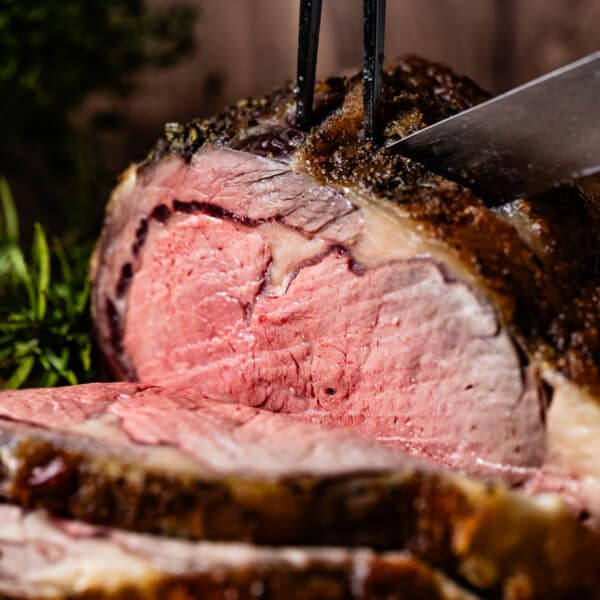

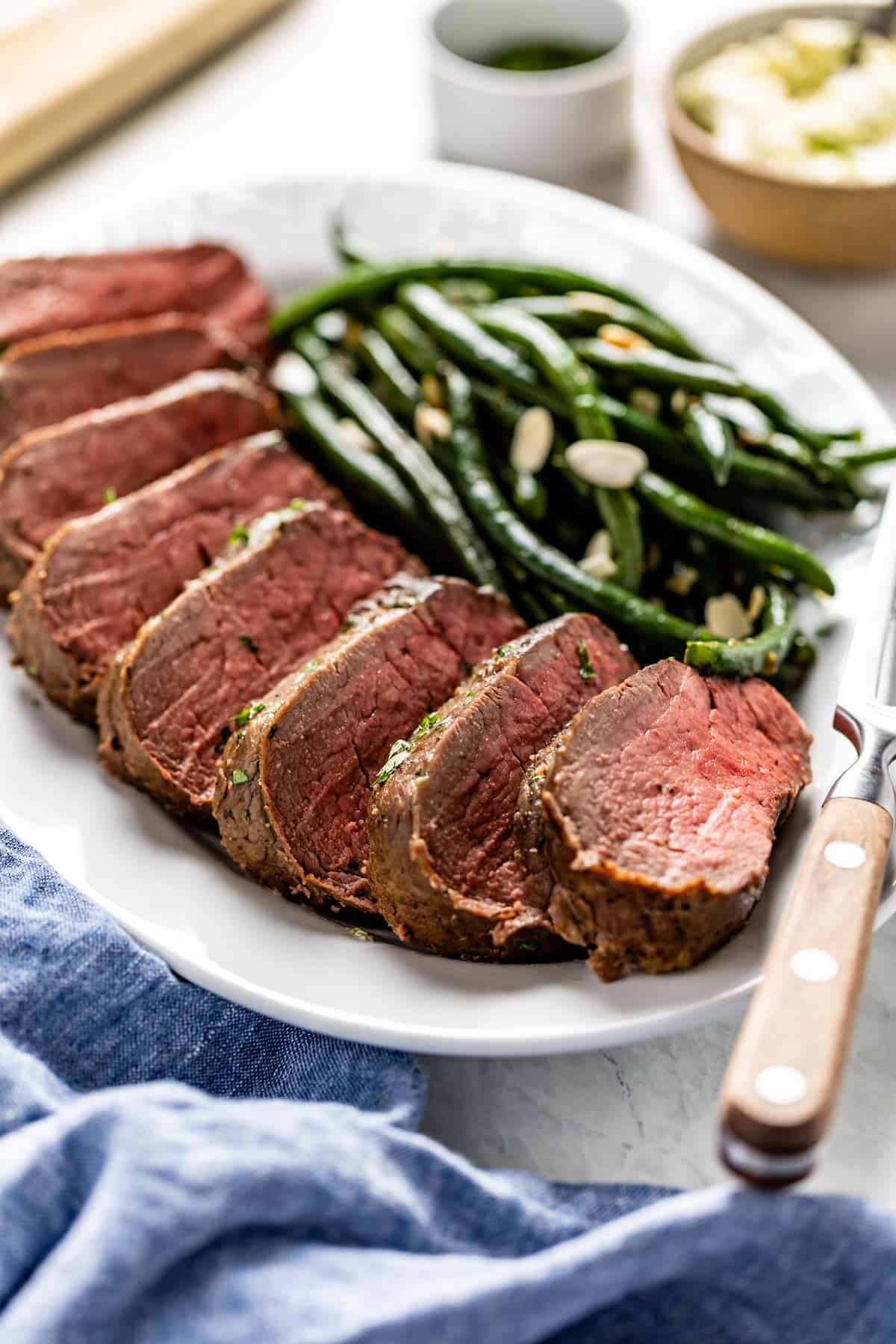
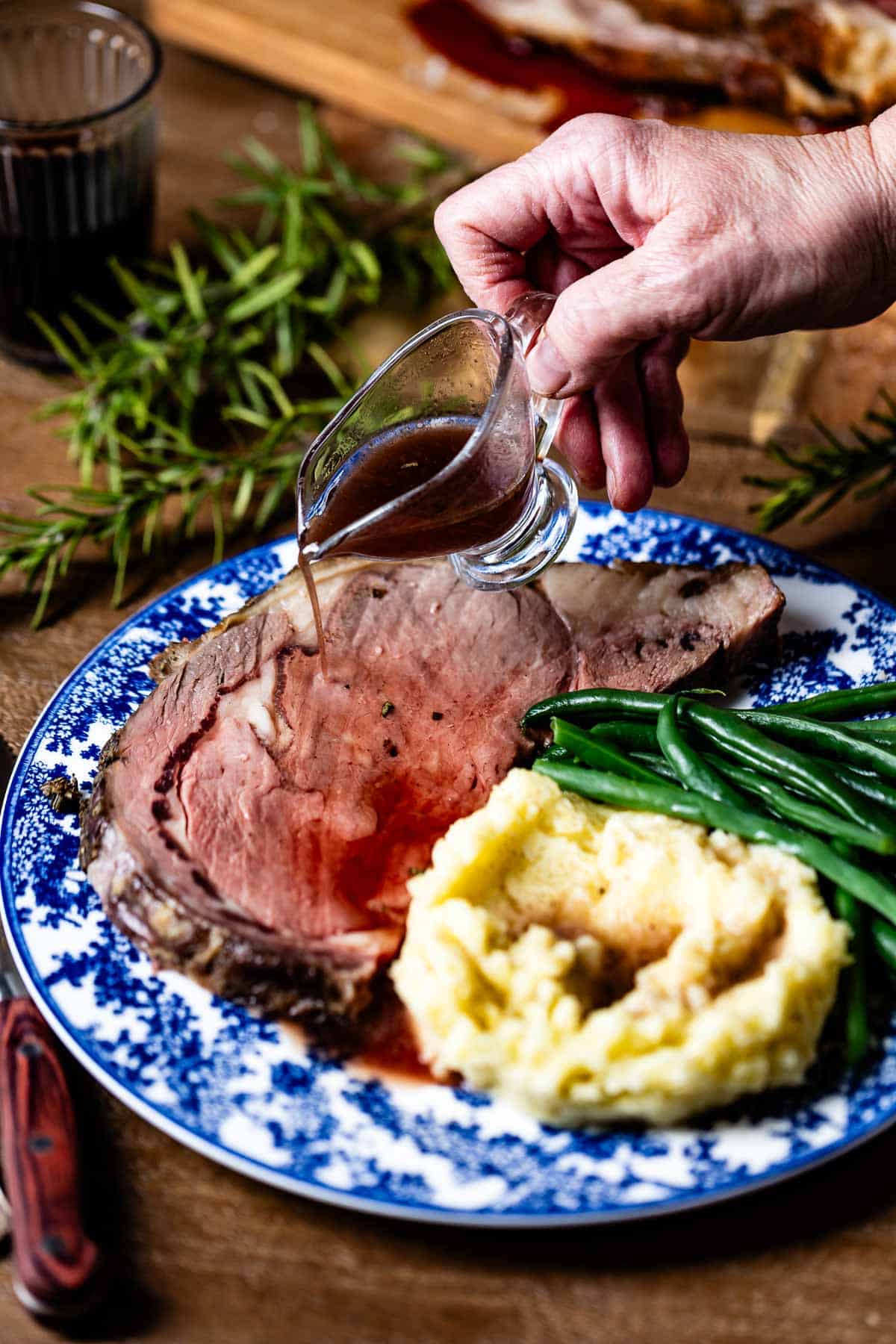
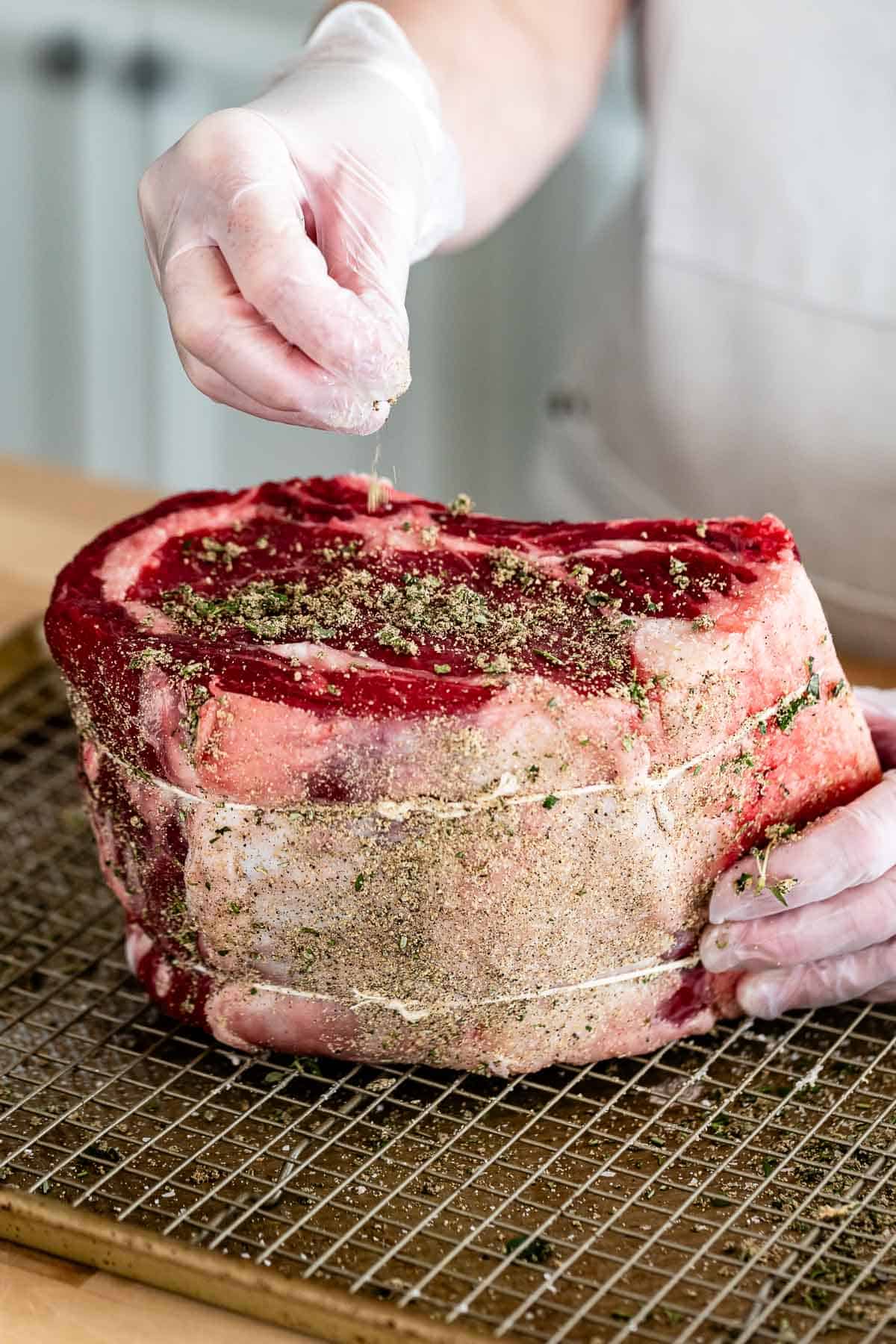
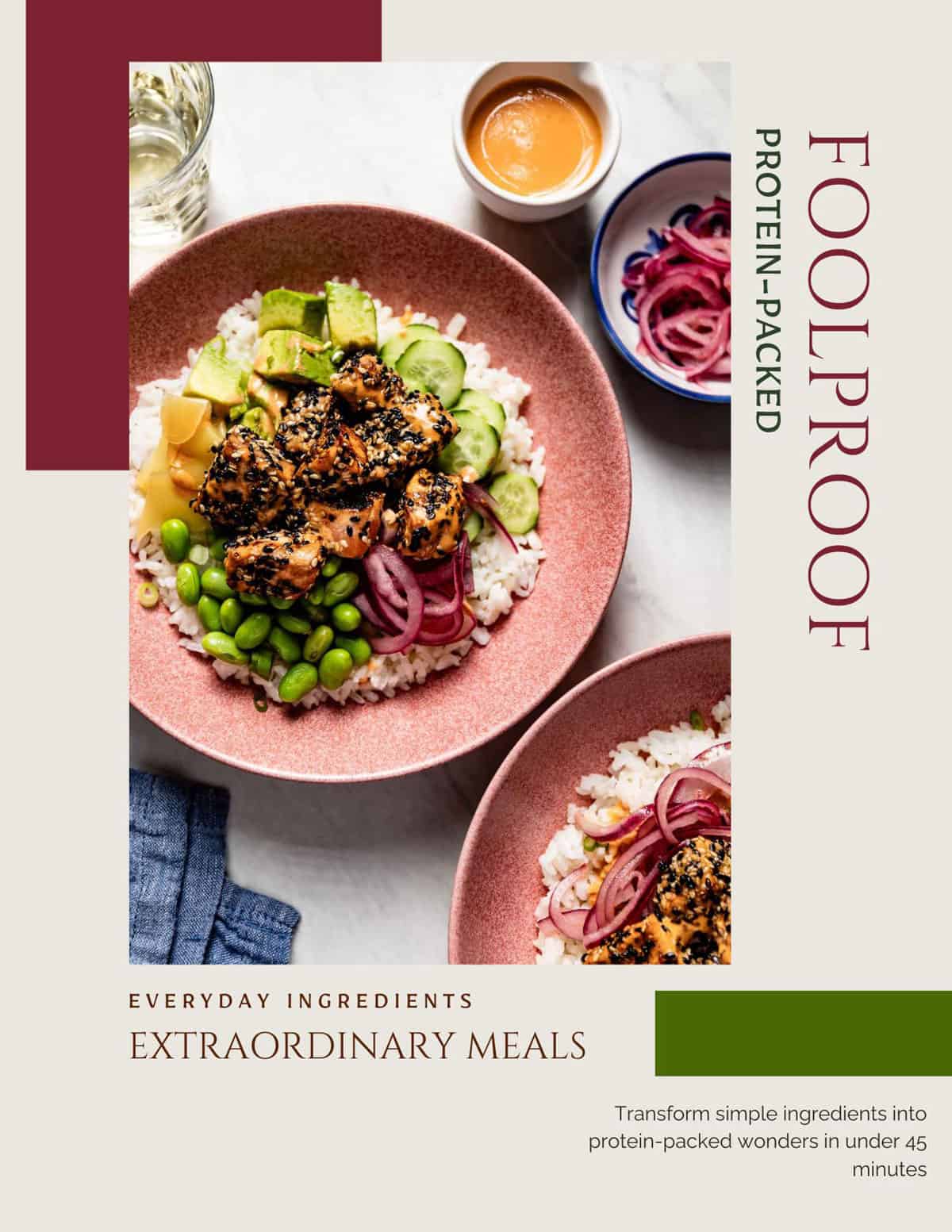









Prime Rib is always my Christmas Day dinner meal. This is the first time I wasn’t worried. It was amazing!!!
This makes me so happy Erika. Thanks for taking the time to leave a review.
Cheers!
This rivals any steak house!!!
I can’t agree more with you on that statement.